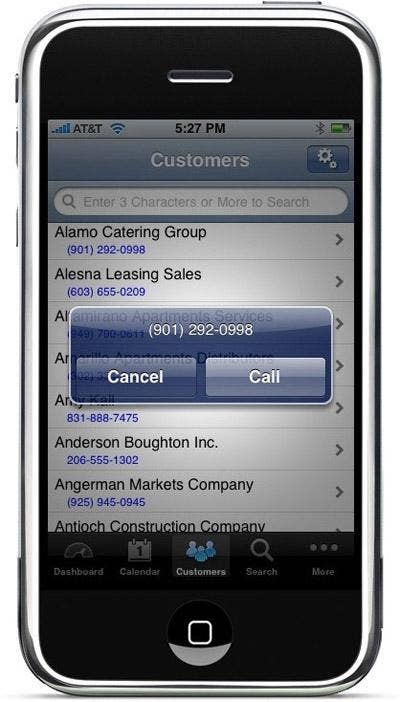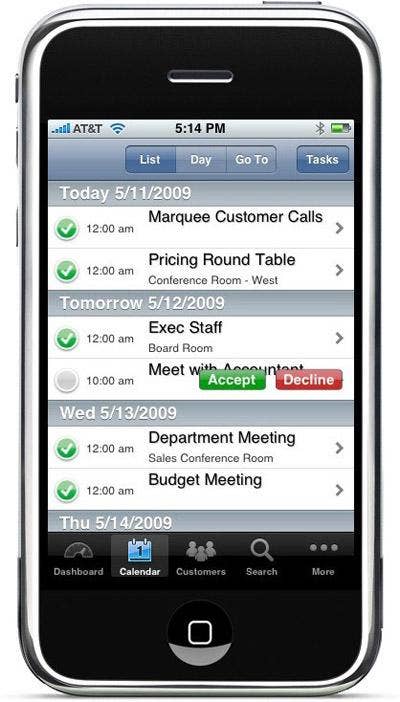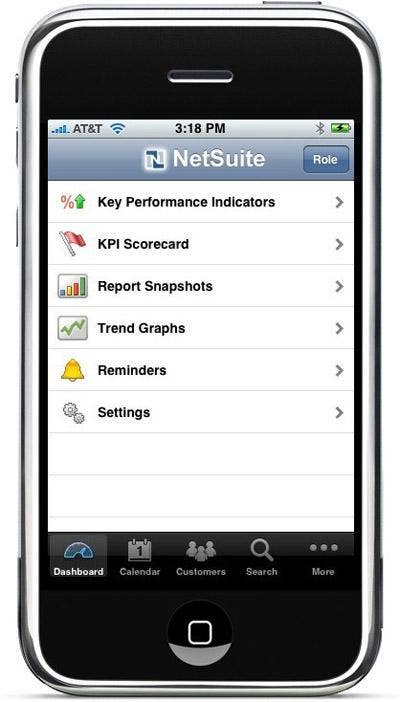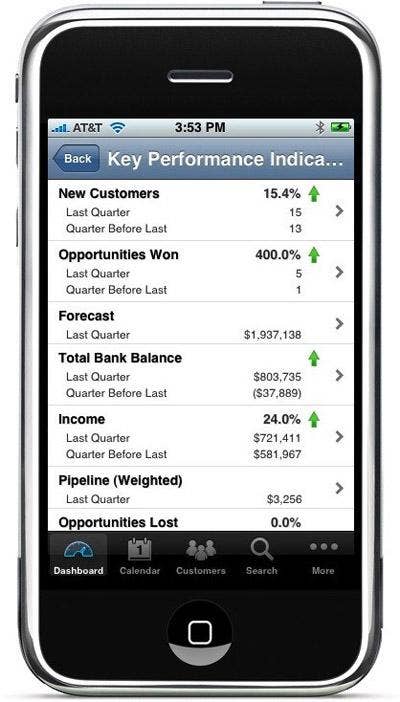NetSuite's ERP Applications Now Support The iPhone

NetSuite has brought access to its ERP application suite to Apple's iPhone and iPod Touch, and the company claims it's the first cloud computing software vendor to support the popular smartphone.
The application interfaces, which run natively on the Apple devices, are free through the Apple App Store and provide access to NetSuite's integrated business management suite.
Road warriors can easily access sales leads, prospects and customer records that are tailored to mobile sales representatives, field service workers and top executives. Need to look up a customer's purchase history while on the way to a sales call? This will do the job.

Just keeping their schedules straight and managing upcoming events can be a big challenge for road warriors. The NetSuite Calendar allows users to manage their schedules, accept or decline events and mark tasks as complete.
While NetSuite officially launched its ERP apps on the iPhone this week, they've been available for about two weeks. More than 1,000 customers have already downloaded the software. NetSuite said that if a business has implemented custom fields, custom records, role-based security or custom dashboards in their NetSuite accounts, those will be reflected in the iPhone application.

The NetSuite applications include dashboards that provide users with key performance indicators, report snapshots, trend graphs, scorecards, reminders and recent records from the vendor's ERP and CRM systems, according to the company.
The application productivity tools take advantage of the Apple device's native capabilities, including click-to-call from any NetSuite record with an e-mail address and click-to-map (through Google Maps) from any NetSuite record with a physical address.

Key performance indicators, such as those shown on this screen, help mobile workers track their companies' performance and their own. Users also have the ability to drill down into any of these KPIs to see the underlying data and explore trends. A user, for example, can see a Top 10 list of the biggest sales, biggest customers, most successful sales reps, etc.